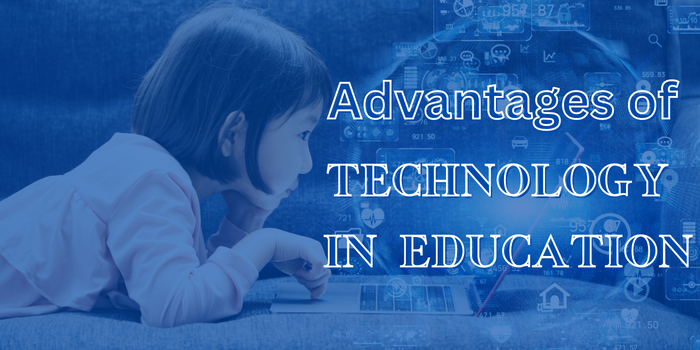Advantages of Technology in Education: How Technology is Revolutionizing the Classroom

Introduction
Technology has made its way into almost every aspect of our lives, and education is no exception. With the integration of technology in education, the way students learn has been transformed. It has opened up new avenues for students to gain knowledge and has made learning more engaging and interactive. In this blog, we will discuss the advantages of technology in education and how it is revolutionizing the classroom.
- Enhancing Teaching and Learning Technology has transformed how teachers teach, and students learn. With the help of digital tools, teachers can create interactive and engaging learning experiences that are more effective than traditional methods. Technology has allowed students to learn at their own pace, giving them more control over their learning process. With the use of technology, teachers can also provide personalized learning experiences tailored to the individual needs of each student.
- Access to Resources Technology has given students a wealth of unavailable resources. With the internet, students can access educational materials from all around the world. This has allowed students to learn about different cultures and ideas, broadening their horizons and expanding their knowledge base.
- Increased Engagement Technology has made learning more engaging and interactive. Using multimedia tools, students can learn through videos, animations, and interactive games. This has made learning more fun and exciting, motivating students to engage more with the material.
- Collaboration and Communication Technology has made it easier for students to collaborate and communicate with their peers and teachers. With digital tools, students can collaborate on projects, share their ideas, and receive feedback in real time. This has made learning more social and interactive, promoting teamwork and communication skills.
- Flexibility and Convenience Technology has made learning more flexible and convenient. With the use of online tools, students can learn from anywhere and at any time. This has made education more accessible to students who may not have been able to attend traditional classes due to geographical or time constraints.
- Cost-Effective Technology has made education more cost-effective. With the use of digital tools, textbooks and other educational materials can be accessed online, reducing the cost of physical materials. This has made education more affordable and accessible to a broader range of students.
- Customization and Personalization Technology has made it possible to customize and personalize the learning experience for each student. With adaptive learning tools, students can learn at their own pace and receive customized feedback based on their learning style and progress. This has made education more effective and efficient, ensuring that each student gets the support they need to succeed.
- Data Collection and Analysis Technology has made collecting and analysing data about student performance easier. With the use of learning analytics, teachers can track each student’s progress and identify areas where they may need additional support. This has made it possible to provide targeted interventions and support, ensuring that each student has the opportunity to succeed.
- Improved Accessibility Technology has made education more accessible for students with disabilities. With assistive technology, students with visual, auditory, or physical disabilities can participate in the learning experience. This has made education more inclusive, ensuring that all students have the opportunity to learn and succeed.
- Preparation for the Future Technology has become an integral part of our daily lives, and integrating technology in education prepares students for the future. With the use of digital tools, students are developing the skills they need to succeed in the workforce of tomorrow. This includes digital literacy, critical thinking, problem-solving, and collaboration skills.
Conclusion:
The advantages of technology in education are numerous, and the integration of technology in the classroom has transformed how we learn and teach. It has made education more engaging, interactive, and personalized, ensuring that each student has the opportunity to succeed. As technology continues to evolve, we can expect even more changes in how we learn and teach. With technology integration in education, we can prepare students for the future and ensure that they have the skills they need to succeed in a rapidly changing world.






7 Comments